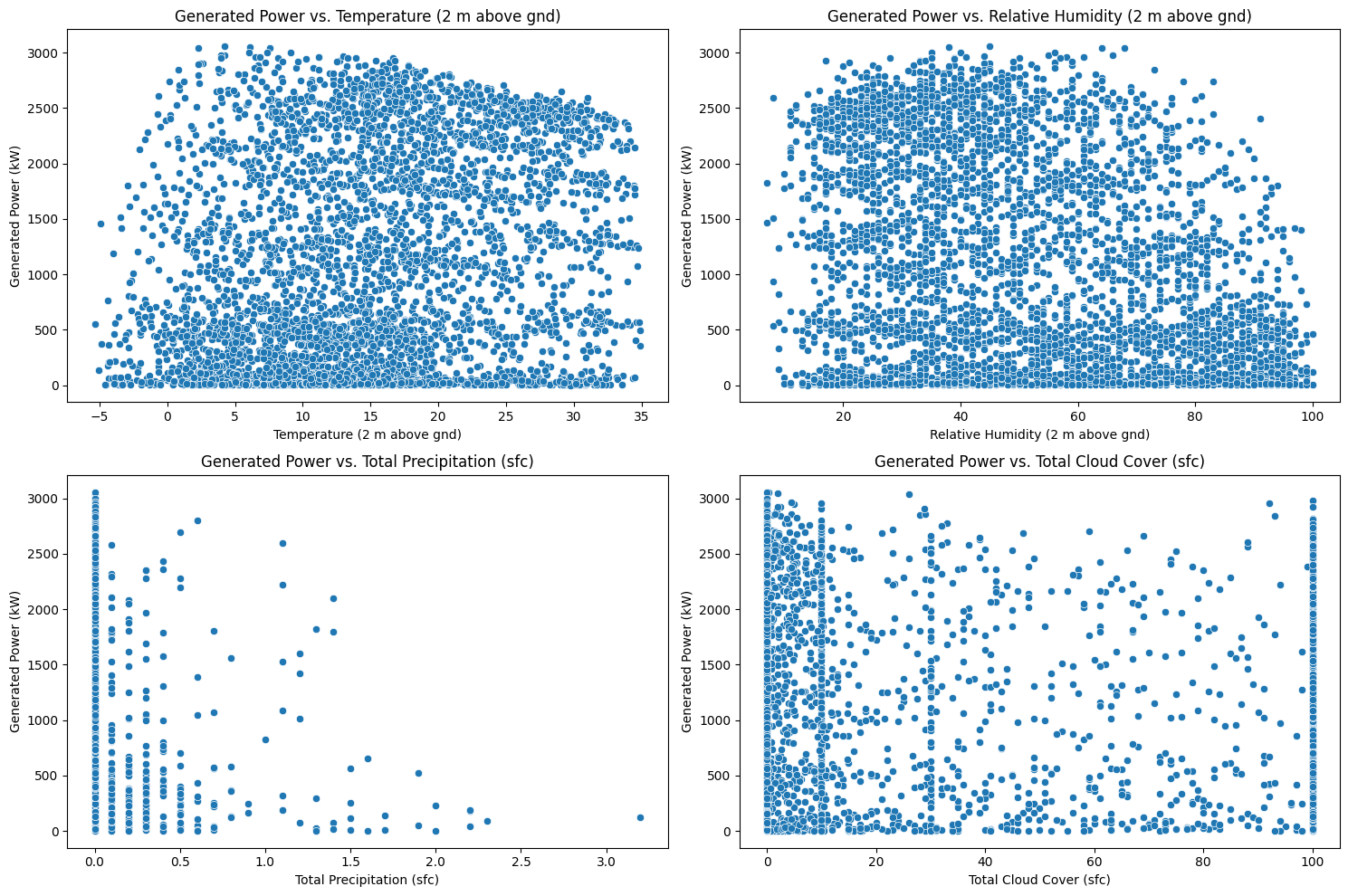Solar Energy Optimization
The goal of this project is to optimize solar power generation with machine learning by analyzing the environmental factors that influence the efficiency of solar panels. A key focus is on the impact of precipitation on generated solar power. By understanding this relationship, we can better predict and optimize solar power generation under varying weather conditions. The project has been deployed and is available at this link. It uses the INMET data available on the backend and a linear regression model from the model.pkl file to predict the power generated.
Importing the solar panel data which contains historical data on generated power and various environmental parameters, we may seek to understand which factors have a bigger impact on the energy generated.

The impact of total precipitation on the generated power is evident. We may create a linear regression model using a part of the complete dataset as training and another portion for prediction. However, the later dataset we'll be using from a São Paulo weather station doesn't have all the columns necessary. Consequently, we focus on the single column for total precipitation. By doing this, we aim to isolate the effects of rainfall on power generation and analyze the strength of this relationship. While this simplification ignores other potentially influential variables, it allows us to clearly understand and quantify the direct impact of precipitation on solar energy output. This targeted approach can provide valuable insights into how weather conditions specifically affect renewable energy sources, which is essential for optimizing performance and planning for future energy needs.

The linear regression model shows relatively good metrics with an R-squared score of 0.73, indicating that the model explains a substantial portion of the variance in the dependent variable. Our next step is to apply our model to the INMET meteorological data from São Paulo. This dataset will allow us to validate the model's efficacy in a real-world scenario, where the prediction of solar power generation based on weather conditions is crucial for operational and planning purposes. By focusing on actual data from a different geographic location, we can test the generalizability and robustness of our model. Further analysis and fine-tuning may be required to adjust for local weather patterns and any other region-specific factors that could influence the model's performance.

The graph illustrates a clear trend: as precipitation increases in São Paulo, predicted solar power output decreases. Extending this linear regression model to other locations can offer insights into regional energy planning, optimizing solar panel efficiency across varying climates and weather conditions.